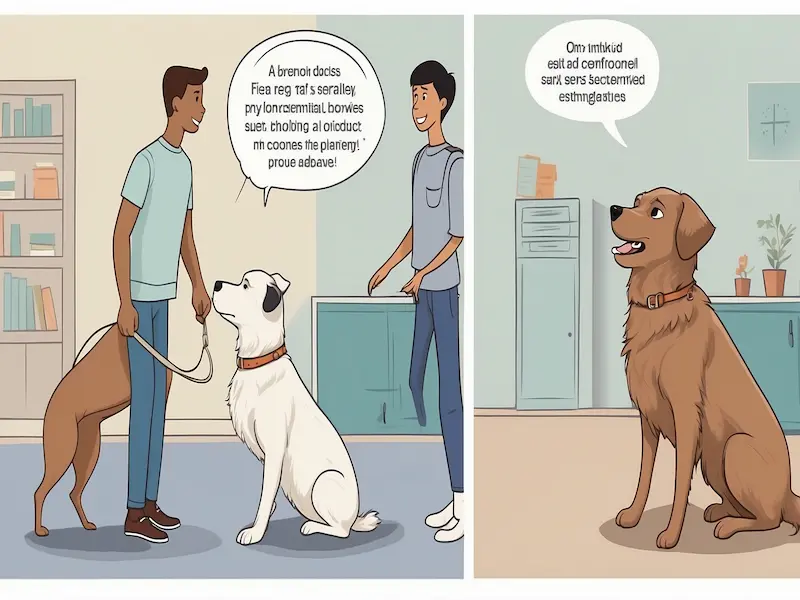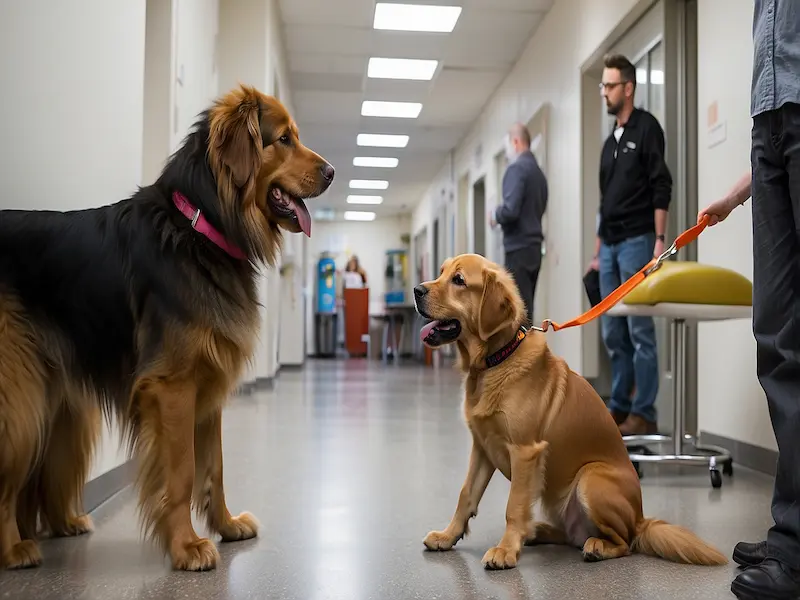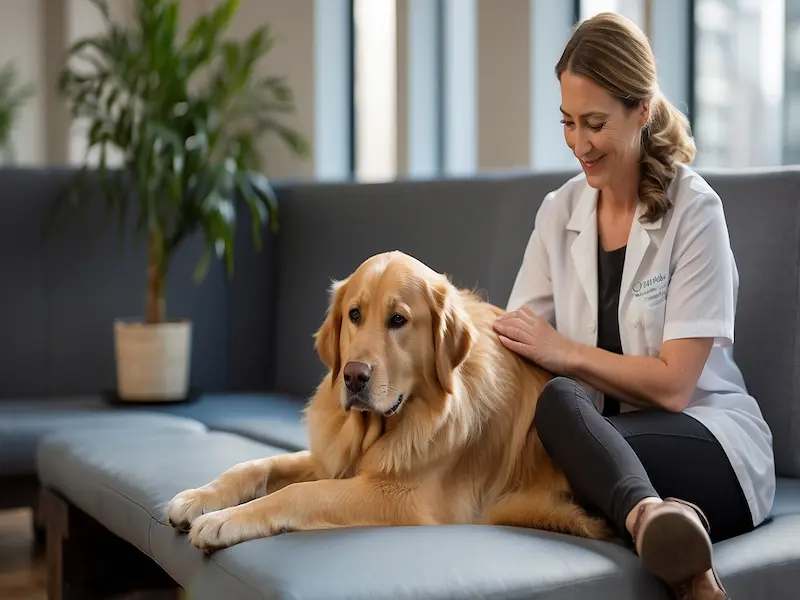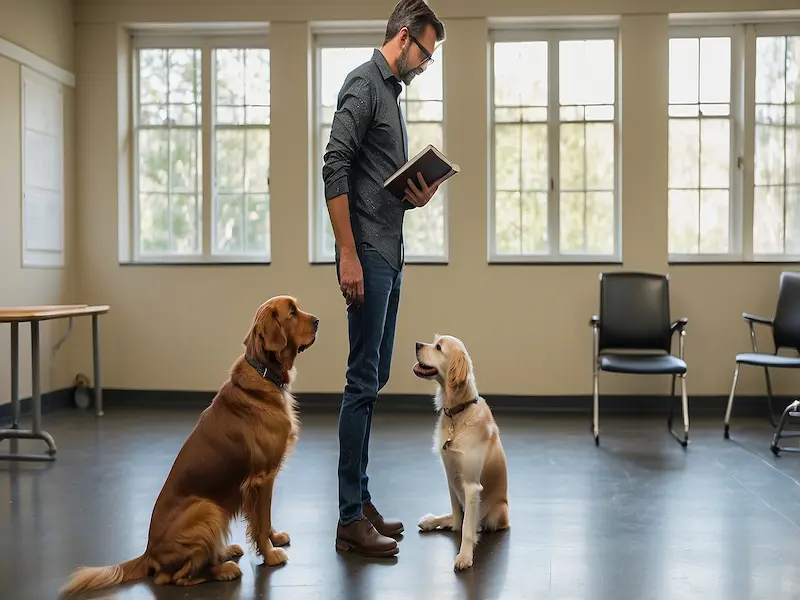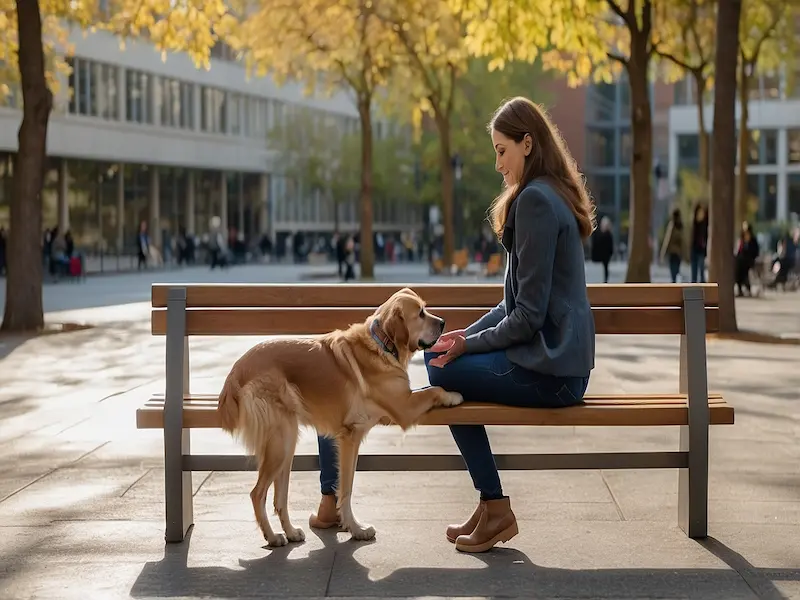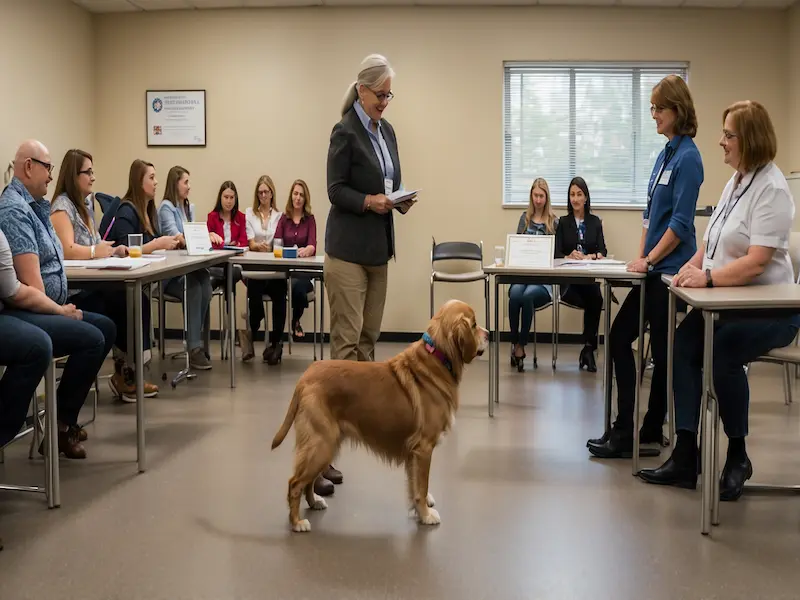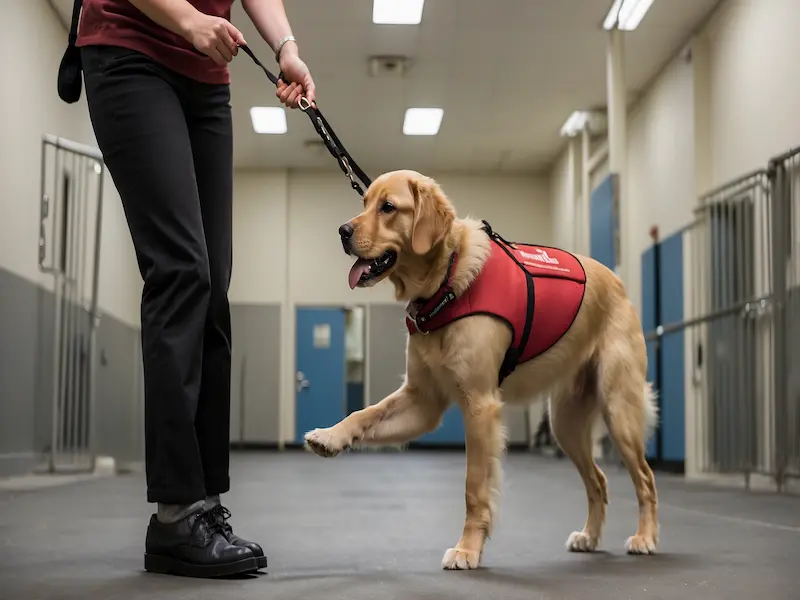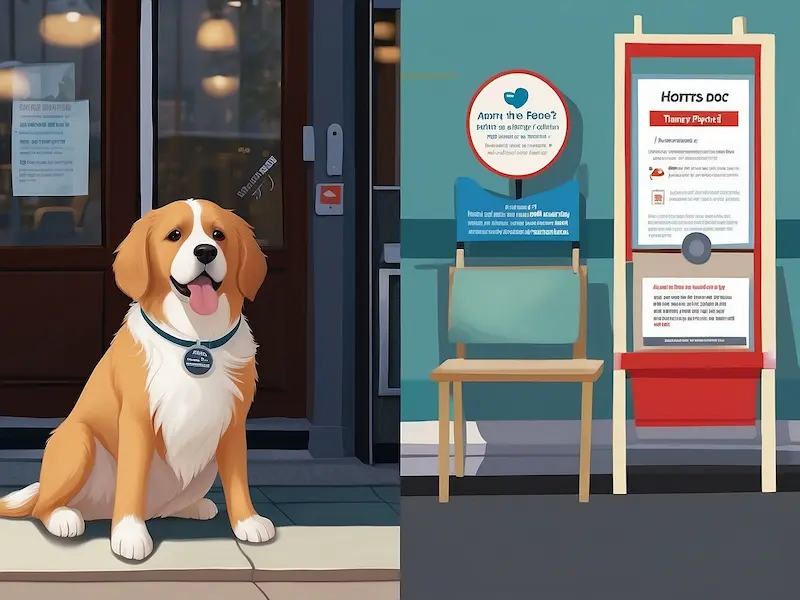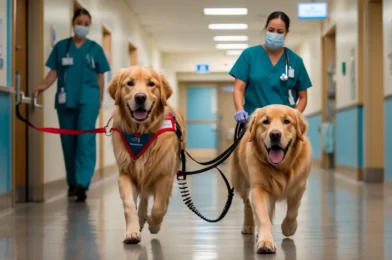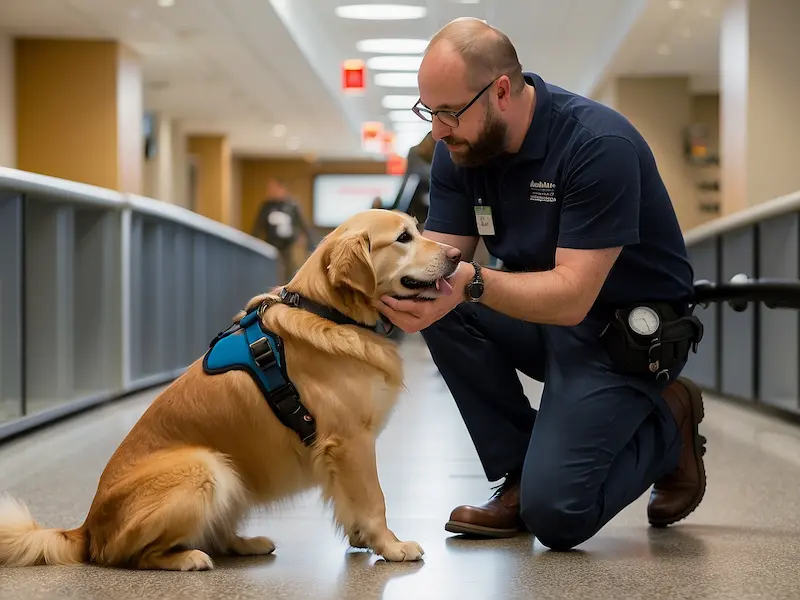Emotional support dogs (ESDs) provide comfort and companionship to individuals with mental health conditions, such as anxiety, depression, and PTSD. Unlike service dogs, emotional support dogs are not trained to perform specific tasks, but their presence can significantly improve their handlers’ well-being. However, ESDs have different legal protections than service animals, and understanding these rights is essential for both handlers and the public.
This guide explores the laws governing emotional support dogs, including housing, travel, and public access rights.
Key Laws Governing Emotional Support Dogs

Emotional support dogs are primarily protected under two U.S. federal laws:
- Fair Housing Act (FHA) – Grants housing rights for ESDs.
- Air Carrier Access Act (ACAA) – Previously allowed ESDs on flights but was revised in 2021.
Unlike service dogs, emotional support dogs are not protected under the Americans with Disabilities Act (ADA) and do not have public access rights.
Housing Rights Under the Fair Housing Act (FHA)
Can Landlords Deny Emotional Support Dogs?
Under the Fair Housing Act (FHA), landlords and housing providers must allow emotional support dogs in housing that has a “no-pets” policy. This law applies to:
- Apartments and rental homes
- Condominiums and townhouses
- University dormitories
Landlords cannot charge pet fees or deposits for emotional support dogs, but tenants must provide a valid emotional support animal (ESA) letter from a licensed mental health professional.
What Are a Handler’s Responsibilities?
While landlords must make reasonable accommodations, handlers must:
- Ensure the dog does not pose a threat or nuisance.
- Provide updated vaccination and health records upon request.
- Submit a valid ESA letter from a mental health provider.
Can a Landlord Request Proof or Certification?
Landlords can request an ESA letter but cannot require specific certification or registration. Online registries offering “ESA certification” are not legally recognized.
When Can a Landlord Deny an Emotional Support Dog?
Landlords may deny an ESD if:
- The dog poses a direct threat to others (e.g., aggressive behavior).
- The accommodation creates an undue financial or administrative burden.
- The housing complex has fewer than four units and the landlord occupies one.
Travel Rights Under the Air Carrier Access Act (ACAA)
Can Emotional Support Dogs Fly for Free?
In 2021, the U.S. Department of Transportation (DOT) revised the Air Carrier Access Act (ACAA) to no longer recognize emotional support animals as service animals. As a result:
- Airlines are no longer required to allow ESDs in the cabin for free.
- ESDs are treated as regular pets, subject to airline pet policies and fees.
- Some international airlines may still accommodate ESDs—check airline policies before booking.
Alternative Travel Options for ESD Handlers
If flying is not an option, ESD handlers can consider:
- Train travel – Amtrak does not recognize ESDs but allows small pets for a fee.
- Bus travel – Greyhound and other major bus lines follow standard pet policies.
- Driving – Many hotels allow ESDs under their pet-friendly policies.
Public Access Rights: Do Emotional Support Dogs Have ADA Protection?
Can Emotional Support Dogs Enter Public Places?
No. Unlike service dogs, emotional support dogs do not have public access rights under the Americans with Disabilities Act (ADA). This means businesses, restaurants, and stores are not required to allow ESDs unless they have pet-friendly policies.
Where Can Emotional Support Dogs Be Denied Entry?
- Restaurants and cafes
- Hotels (unless pet-friendly)
- Malls and retail stores
- Public transportation (except where pet policies apply)
However, some private businesses may allow ESDs at their discretion.
How Is an Emotional Support Dog Different from a Service Dog?
| Feature | Service Dog (ADA Protected) | Emotional Support Dog (FHA Protected) |
|---|---|---|
| Legal Protections | Full public access rights | Housing rights only |
| Training Required | Task-trained for a disability | No specific training required |
| Public Access | Allowed everywhere | Restricted, allowed only in pet-friendly places |
| Airline Travel | Allowed for free | Not recognized, must follow pet policies |
Understanding these differences helps prevent confusion when requesting accommodations.
How to Obtain an ESA Letter for Housing Rights
What Is an ESA Letter?
An ESA letter is an official document from a licensed mental health professional stating that an individual requires an emotional support animal for their mental health condition.
Who Can Write an ESA Letter?
A legitimate ESA letter must come from a licensed professional, such as:
- Psychiatrists
- Psychologists
- Licensed therapists or counselors
- Licensed clinical social workers (LCSW)
What Should an ESA Letter Include?
A valid ESA letter must:
- Be written on the provider’s official letterhead.
- Include the provider’s license number and contact details.
- State the handler’s need for an emotional support animal.
- Be signed and dated within the past 12 months.
How to Avoid Fake ESA Letters
- Avoid websites offering instant ESA letters without an evaluation.
- Only consult licensed mental health professionals.
- Verify the provider’s license number before submitting a letter.
State-Specific Emotional Support Dog Laws
While federal laws protect ESDs under the FHA, some states have additional laws regulating emotional support animals. Key differences may include:
- Additional housing protections for tenants with ESDs.
- Criminal penalties for misrepresenting a pet as an ESA.
- Specific guidelines for employers allowing ESDs in the workplace.
To determine your state’s specific laws, check your state government’s housing and disability resources.
Misrepresentation of Emotional Support Dogs

Falsely claiming a pet as an emotional support or service dog can lead to legal consequences. Some states impose fines or misdemeanor charges for misrepresentation. Honest and responsible handling of ESDs helps maintain credibility and ensures fair treatment under the law.
Conclusion
Emotional support dogs provide vital comfort for individuals with mental health conditions, but their legal rights differ from those of service dogs. Understanding the Fair Housing Act (FHA) and Air Carrier Access Act (ACAA) ensures that handlers receive appropriate accommodations without violating policies.
By obtaining a legitimate ESA letter, respecting public access limitations, and following housing laws, ESD handlers can confidently navigate their rights and responsibilities.
Frequently Asked Questions (Q&A Section)
Can emotional support dogs go into restaurants?
No, ESDs do not have public access rights under the ADA and can only enter pet-friendly establishments.
Can landlords charge pet deposits for emotional support dogs?
No, under the Fair Housing Act, landlords cannot charge additional pet fees or deposits for ESDs.
Do airlines allow emotional support dogs for free?
As of 2021, airlines are no longer required to allow ESDs in the cabin. Each airline sets its own pet policy.
Can I register my emotional support dog online?
No, there is no official ESA registry. Only a licensed mental health professional can issue a valid ESA letter.
What happens if a landlord refuses to accept my emotional support dog?
If a landlord refuses a legitimate ESA request, tenants can file a housing discrimination complaint with the U.S. Department of Housing and Urban Development (HUD).
By understanding these laws, emotional support dog handlers can ensure their rights are protected while respecting legal guidelines.







